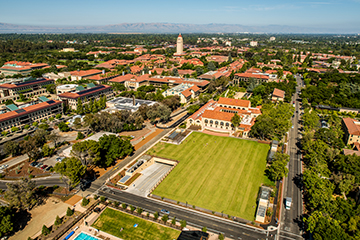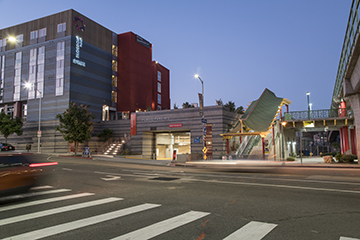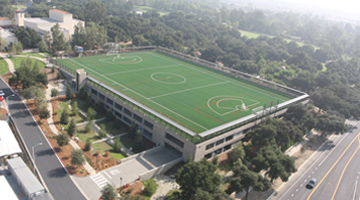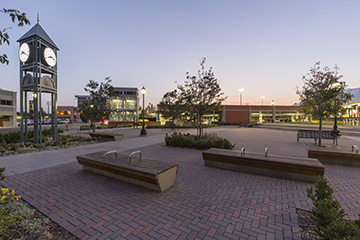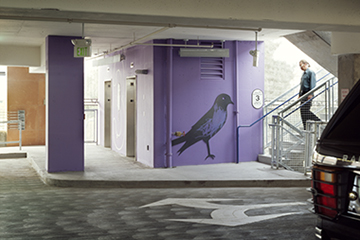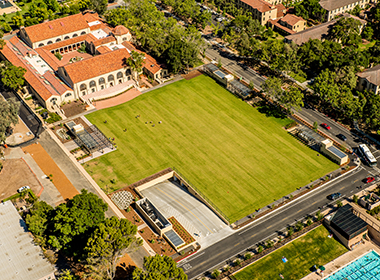 The Roble Field parking structure at Stanford University preserves valuable green space while encouraging a sense of campus community.
The Roble Field parking structure at Stanford University preserves valuable green space while encouraging a sense of campus community.
Previously in this series, we discussed how incorporating public space can humanize parking structures by creating places for people to linger and interact with each other in meaningful ways. In part 4, we will take this concept a step further and explore how green roofs can provide a unique arrival experience while preserving valuable open space in constrained, urban areas.
The more urban downtown cores and college campuses densify, the fewer opportunities there are to preserve or create valuable green space. Integrating a green roof onto a parking structure can provide a solution to this challenge. Not only does it provide green space that can strengthen the community, it also reduces the carbon footprint of a structure and presents a welcoming environment for visitors. Imagine, for instance, that the first sight greeting you upon your arrival isn’t a parking structure, but a pleasant park. Upon parking your car, instead of exiting onto a busy, crowded street, you find yourself surrounded by benches and trees.
This is what users experience at Stanford University’s Roble Field and Medical Center #4 parking garages. By placing a green roof over each structure, the University met their parking needs while preserving historic landmarks such as a section of the historic Governor’s Lane, which runs across the site of the Medical Center Parking Structure. To make the parking experience even more enjoyable, the pedestrian entrance to the structure utilizes interactive sound technology that creates a playful interaction between the building and the visitor.
At Blossom Plaza in downtown LA, the roof of the development’s subterranean garage serves as a public plaza accented with landscaping and a water feature, creating a pleasant and enjoyable transition from parking to the adjacent residential development and Metro station. In Oakland, the Kaiser Center Roof Garden sits atop a five story parking garage and features lush landscaping, trees and a scenic pond that is open to the public and even hosts wedding ceremonies. At the time of its completion in 1960, it was the largest green roof in the world.
Parks and plazas are not the only option for utilizing a green roof. Dense, urban campuses have used this approach to integrate a playing field for student athletes. By combining parking with an active use like outdoor sports, campuses like UC Berkeley and Pomona College have not only created a more dynamic use of space, but made an architectural statement to welcome visitors and make their experience memorable.
Read more in this series:
Part 1: Public Art – Part 2: Public Spaces - Part 3: Pedestrian Connections - Part 5: First Impressions


